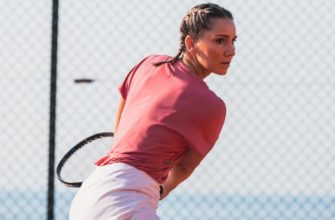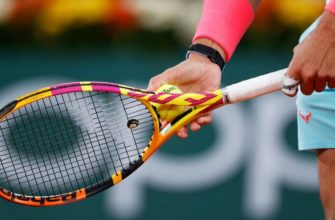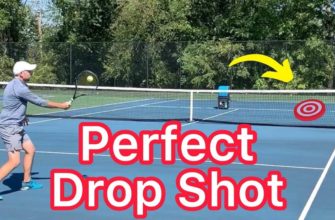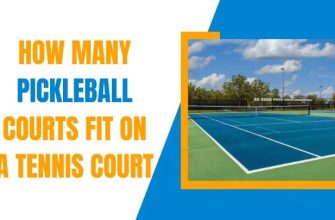Tennis isn’t just about playing opponents – solo practice can help too. It’s a great way for everyone – from beginners to pros – to focus on technique, get fit, and build mental strength.
Start with stretching and light cardio. This will prepare your body and helps to avoid injuries.
Next, use cones or markers to simulate different positions. Practice moving quickly and efficiently from one spot to another – this is key in tennis.
Then, use a ball machine or hit against a wall to practice different shots – forehands, backhands, volleys and serves. Focus on form, technique, and timing.
Solo practice also helps to fine-tune your mental game. Visualize different match scenarios and strategize. Work on concentration, decision-making, and resilience.
Emma is an inspiring example. She had no coach or partner but put in hours of practice against a wall. She persevered and eventually competed at a national level and was recognized for her skills.
Benefits of Practicing Tennis Alone

Practicing tennis alone has many advantages! You can improve your game without distractions, focus on your own performance, and reflect on your strengths and weaknesses. Moreover, you have complete control over training sessions and can build your stamina and endurance.
Furthermore, solo practice encourages independence and self-reliance, helping you find solutions on your own. It also cultivates a sense of responsibility and determination, leading to personal growth.
The history of practicing alone is fascinating too – Andre Agassi famously developed his power game through solo practice. His hard work paid off and he became one of the most successful players in history, illustrating the importance of solo practice for improving skills.
Equipment Needed for Practicing Tennis Alone

Practicing tennis alone requires a specific set of equipment to ensure an effective solo session.
Here are three essential items you need:
- Tennis Racket: A high-quality racket is essential for practicing tennis alone. Choose one that is suitable for your skill level and playing style, ensuring a comfortable grip and optimal control.
- Tennis Balls: You’ll need a sufficient number of tennis balls to practice various shots and drills. It’s recommended to have at least six to eight balls to maintain a continuous practice session without interruptions.
- Ball Hopper or Ball Machine: To make the most of your solo practice, a ball hopper or ball machine is highly beneficial. A ball hopper allows you to easily collect and store the balls, while a ball machine can simulate various shots and help improve your timing and accuracy.
Additionally, consider investing in a tennis net or wall for more dynamic training options. These pieces of equipment can provide a more realistic experience and enhance your overall skills.
Now that you have the necessary equipment, it’s crucial to create a structured practice routine and focus on specific aspects of your game to maximize improvement. With dedication and consistent practice, you can enhance your tennis skills and excel on the court.
Considering how many times I’ve accidentally hit myself with a tennis racket, I could have been a pro at practicing alone.
Tennis racket
A tennis racket is a must-have for solo practice. It is vital for improving performance and sharpening skills on the court.
- The size and weight are key factors. A light racket allows more agility, while a heavier one gives more power in shots.
- The grip size affects comfort and control. It helps avoid injuries and keep stability during play.
- The string tension affects control and power. Higher tension gives more control, and lower tension offers increased power. Finding the right balance is necessary for optimal performance.
- The racket head size determines the sweet spot and forgivingness on off-center shots. A larger head size offers a bigger sweet spot, improving chances of accurate shots even if not centered.
Plus, technology such as vibration dampening systems or improved stability can help playing experience, and reduce injuries or discomfort.
To get better at the game:
- Customize your racket. Change the string type, tension, or add weight to certain parts of the frame. This will enhance control and power in shots.
- Restring regularly. Strings lose tension and effectiveness over time. Restringing your racket often keeps performance consistent and controls the ball better.
- Test different rackets. Not all rackets suit every player. Try various brands and models to find a racket that fits your style of play and optimizes your skills.
- Seek expert advice. Consult a tennis coach or equipment specialist. Their knowledge and experience help select a suitable racket that suits skill level and style.
By following these steps and understanding the importance of choosing the right racket, you will be able to upgrade your performance and get the most out of practice. Remember, the right racket makes a big difference in your game.
Tennis balls
Tennis balls come in two types – pressurized and pressureless. Pressurized balls are great for competitive play; they have a hollow core filled with air and give a good feel on impact. Pressureless balls, on the other hand, don’t rely on internal air pressure. They are long-lasting and better suited for training or casual games.
When choosing tennis balls, it’s important to consider factors like durability and price. Pressurized balls have a shorter lifespan, but better performance in competitive play. Pressureless balls are more expensive, but last longer.
To make sure your tennis balls last and perform well:
- Store them in a cool, dry place.
- Rotate them regularly.
- Check the felt covering before each use.
- Clean them with a damp cloth after play.
By following these suggestions, you can extend the life of your tennis balls and get the most out of them during practice or matches. Quality tennis balls are essential for accurate shots and improvement in your game.
Warm-up Exercises Before Practicing Tennis Alone

Warm-up exercises are essential for solo tennis practice. These help your body to be ready for the physical demands of the sport and reduce the risk of injuries.
Here are four warm-up exercises to incorporate:
- Dynamic stretches: Do lunges, high knees, leg swings, and arm circles to increase flexibility and range of motion.
- Aerobic exercise: Jogging or jumping jacks can raise your heart rate and warm up your muscles.
- Shadow strokes: Practice tennis strokes without a ball. Focus on technique and footwork.
- Footwork drills: Set up an agility ladder or cones to improve court speed, agility, and coordination.
To enhance your warm-up routine, you can also include light ball hitting or serve practice. Gradually increase the intensity as you progress.
These warm-up exercises not only reduce the risk of injury but also improve your performance. Take care of your body before intense solo practice sessions.
Fun fact: A study published in the Journal of Science and Medicine in Sport shows that a warm-up routine can improve tennis players’ movement patterns and reaction times.
Basic Techniques and Drills for Practicing Tennis Alone

Tennis is a sport that can be practiced alone, allowing players to improve their skills and technique.
To master basic techniques and drills for solo tennis practice, consider the following:
- Footwork: Focus on agility and quick movement by performing ladder drills or practicing side-to-side and forward-backward steps. This will improve your court coverage and reaction time.
- Shadow tennis: Imagine playing against an opponent and simulate shots and movements. This helps develop muscle memory, timing, and stroke technique.
- Wall practice: Utilize a sturdy wall to hit against, mimicking rally exchanges. Practice different strokes such as forehands, backhands, volleys, and overheads. This also improves accuracy and control.
- Serve and return: Set up targets on the court or use chalk lines to practice serving with precision. Practice returning serves by hitting against a wall or using a ball machine. This helps refine your serve technique and return skills.
- Solo drills: Incorporate various drills such as practicing groundstrokes, volleys, and overheads. Use cones or markers to create specific target areas on the court. This improves shot placement, control, and consistency.
To further enhance your solo practice, explore online tutorials, watch professional matches, and consider recording your practice sessions for self-analysis. Remember, consistent and focused solo practice can greatly improve your game. Don’t miss out on the opportunity to sharpen your skills and reach your full potential on the tennis court.
Groundstrokes: Where hitting imaginary balls is not just for your dog to chase after.
Groundstrokes

Mastering groundstrokes is key for tennis players. These shots require hitting the ball after one bounce, making them essential for offence and defence.
Take your game to the next level with these tips:
| Forehand | Backhand |
|---|---|
| Use a semi-western grip. Rotate your body and swing high from low. | Grip firmly. Make contact with the ball just in front of your body. |
| Volley | Drop Shot |
| Get close to the net. Keep your racket head up. Use a short punching motion. | Startle your opponent. Gently hit the ball, causing it to bounce near the net. |
Make your groundstrokes even better by concentrating on footwork. Move to the best spot before each shot. This will give you more control and power.
Tennis.com reports that with correct technique and consistent practice, groundstrokes will significantly improve your game.
Forehand
Forehand shots are key in tennis. To succeed on the court, you need to master this technique. Here are some drills and techniques to practice forehand alone.
Look at this table for drills and techniques to improve your forehand:
| Drill / Technique | Description |
|---|---|
| Shadow Swing | Mimic the forehand swing without hitting the ball. Focus on form. |
| Wall Rally | Hit against a wall. Maintain a rally for accuracy and consistency. |
| Target Practice | Set up targets. Improve shot placement and precision. |
| Crosscourt Shots | Improve control and depth with crosscourt shots. |
| Inside-Out Forehands | Increase shot selection with inside-out forehands. |
Include footwork drills too. Move around the court and position yourself for each shot.
Let me tell you the story of Sarah, an amateur tennis player. She had trouble with her forehand. She chose to practice her forehand every moment she had free.
Sarah spent lots of time on the court. She worked on her footwork, grip, and follow-through. Progress was slow, but she stayed determined.
Then one day at a tournament, Sarah’s forehand surprised everyone. Her shots were accurate and powerful. People began to talk about her progress, and she started winning matches against experienced players.
Sarah’s story shows that with dedication and perseverance, anyone can turn their weaknesses into strengths.
Backhand
The backhand is a must-have for tennis. It needs perfect precision and skill. Master it and you’ll be a true pro! Here are some tips and drills to get you started.
Technique
- Grip the racket between your fingers.
- Put your feet shoulder-width apart.
- As you swing the racket, rotate your hips.
- When you make contact with the ball, extend your arm until you finish the motion.
Drills
- Cross-court Backhands: Stand near the baseline. Hit cross-court shots with your backhand. Keep the ball low over the net. Aim for accuracy.
- Two-Handed Backhand Progression: Start by using two hands. Gradually switch to one. This strengthens both arms.
- Backhand Approach Shots: Place cones or markers on one side of the court. Practice hitting backhands as you move forward.
Unique Tip: Visualize playing against an imaginary opponent. This will improve your reflexes and prep you for tough game situations.
Don’t Miss Out! Practice your backhand alone. This will give you an edge over players who don’t. Incorporate drills into your routine regularly. Your improvement will be obvious!
Volleys
For better understanding of volleys, let’s look at their key parts:
- Preparation: Feet shoulder-width apart. Knees slightly bent. This gives more stability and agility during the volley.
- Grip: Continental grip is usual. Place the base knuckle of the index finger on the second bevel of the racket handle.
- Contact Point: Unlike groundstrokes, hit the ball before it bounces. Near the front foot is best. Quick reaction time and precise shot placement.
- Follow-through: After contact with the ball, extend arm towards target. This keeps control and adds power if needed.
Practicing these elements builds a good foundation for mastering volleys. Here’s a story to emphasize this. Emily was a promising young tennis player. She worked hard to improve her volley technique, even when struggling. With consistent practice and determination, she won her first tournament using her well-developed volley skills.
Practicing alone helps you work on technique, as well as build mental resilience and adaptability on court. Keep striving for improvement, even when solo!
Serves
Serves in tennis are a must-know. It’s the shot that begins the point and sets the tone for the entire rally. The server has control over how the ball moves and spins. Mastering different types of serves gives you an advantage.
Let’s look at the important elements in a table:
| Serve Type | Description |
|---|---|
| Flat Serve | Powerful & direct. Minimal spin. |
| Slice Serve | Curves away from right-handed players. |
| Kick Serve | High-bouncing. Challenges opponents’ return. |
These all need precision and skill. A well-executed serve can put pressure on opponents right away.
Apart from types of serves, consistency and accuracy are key. Drills to focus on those can help improve them.
John McEnroe’s temper tantrums and Serena Williams’ record-breaking serves have made history. Professional players are pushing boundaries with their serves. It’s an area that athletes strive to excel in.
Serves are much more than shots. Knowing this aspect of tennis can help players perform better on the court.
Advanced Techniques and Drills for Practicing Tennis Alone

Solo tennis practice requires advanced techniques and drills to improve skills and maintain a high level of performance.
Here are six effective methods to enhance your individual training sessions:
- Shadow swinging: Visualize a virtual opponent and practice your strokes and footwork with full intensity. This technique helps improve your technique and timing.
- Wall hitting: Utilize a wall as a practice partner to enhance your accuracy, control, and consistency. Vary your distance and angles to simulate different shot scenarios.
- Multi-ball drills: Use a basket of balls and set targets for yourself on the court. Practice hitting multiple balls in quick succession, mimicking the pace and intensity of a real match.
- Sliding drills: Set up a slippery surface like a plastic sheet or use specialized footwork training aids. Focus on sliding and stopping quickly to improve your agility and court coverage.
- Serve and return practice: Set specific targets on the service box and work on perfecting your serves. Practice your return shots against a rebound board to maximize your returning skills.
- Challenge yourself: Create mini-games and simulate real match scenarios during solo practice. This will enhance your decision-making skills, mental focus, and ability to handle pressure situations.
To further enhance your solo tennis practice, consider these additional details: vary shot types, speeds, and spin; incorporate mental imagery to visualize successful shots and scenarios; focus on strengthening your weaker areas; and maintain a consistent training schedule.
Don’t miss out on the opportunity to elevate your tennis skills through effective solo training. Embrace these advanced techniques and drills and witness significant improvements in your performance on the court. Start implementing these methods today and take your game to the next level!
Who needs a partner when you can trip over your own feet and blame it on your imaginary opponent? Footwork drills – perfect for both agility and self-inflicted humiliation.
Footwork drills
Want to up your footwork game? Try these drills!
- Shadow Footwork: Mimic movements you’d make in a game – without hitting the ball. Practice footwork patterns and transitions to develop muscle memory and boost your movement efficiency.
- Ladder Footwork: Set up a ladder and do quick feet, lateral steps, and crossover steps to improve coordination, foot speed, and change of direction.
- Dot Drill: Draw random pattern dots on the ground and jump in different sequences, landing on each dot with precision and balance to increase explosiveness, reaction time, and foot-eye coordination.
- Hurdle Drill: Set up hurdles at various heights in a line or zigzag pattern. Jump over them with proper form and speed to strengthen leg muscles and improve your jump.
Practice these drills for 15-20 minutes daily for best results. Consistency is key! Coach Patrick Mouratoglou says that mastering footwork can also improve mental acuity during a game.
Accuracy drills
- Try out the target practice drill for solo training. Set up cones or markers as targets, and practice hitting them accurately. This helps your aim and control.
- The ladder drill is also beneficial. Use tape or chalk to make a ladder-like structure on the ground. Hit each shot, aiming for a different square from top to bottom. This will refine your precision and footwork.
- Distance-based accuracy drills are great too. Put targets at various distances and aim to hit them without missing. This tests your ability to adjust power and angle.
Don’t miss the chance to improve your shots. Start these drills today and watch accuracy rise!
Power drills
Want to take your game to the next level? Add these power drills to your training routine!
Hold a weighted medicine ball with both hands and mimic your serve motion. This builds muscle strength and explosiveness in your swing.
Plyometric lunges are great for improving leg power, coordination, and balance. Start in a lunge position and explode into a jump, switching legs mid-air.
Resistance band forehands can help target specific muscles used in your stroke for increased power. Attach a resistance band to a fixed object and grip it like you would hold a tennis racket.
Consult a coach or trainer for proper form and technique. Dedicate time to perfecting your technique and building strength to see significant improvements in your game. Elevate your tennis skills to new heights – challenge yourself!
Tips for Staying Motivated While Practicing Tennis Alone
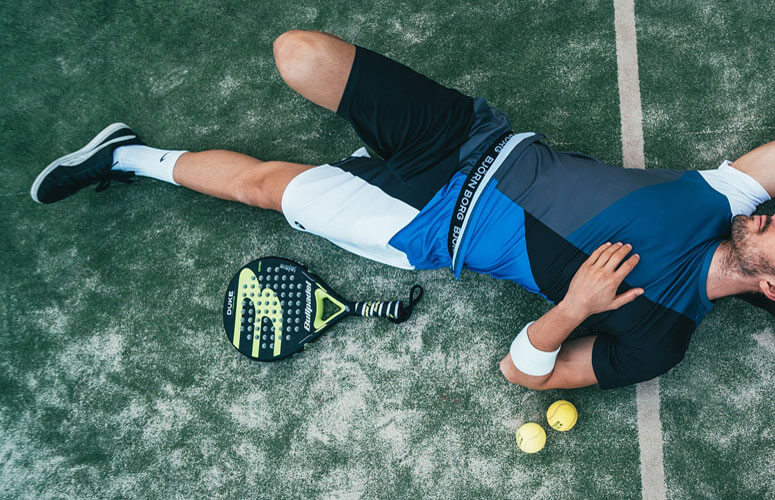
Practicing tennis solo can be hard, as it lacks the fun of playing with a pal or a team. But, here are some tips to stay motivated and get the most out of your lone practices.
- Set goals for each session. Clear objectives will give you something to aim for and keep you motivated.
- Vary your routine. Incorporate new drills, skills, and techniques to stop boredom and keep things fun.
- Track progress. Watching your improvement over time gives you a sense of achievement and boosts your motivation for practicing alone.
- Visualize success. Just before each practice session, pretend you’re performing well on the court. This mental imagery technique can help focus and motivate during solo practices.
Remember, solo practice has its perks like concentrating on personal growth and sharpening certain skills. But, it’s just as important to find ways to get the social aspect of the game back.
Alex, an enthusiastic tennis player, had to practice alone during his college years since he couldn’t find any partners. Instead of getting demotivated, he used this time to upgrade his footwork and agility by setting up obstacle courses on vacant courts. Not only did this unusual method make his solo practices more fun, but it also greatly improved his performance in competitive matches.
Frequently Asked Questions
Q: Can I improve my tennis skills by practicing alone?
A: Yes, practicing alone can greatly improve your tennis skills. Solo practice allows you to focus on specific techniques, footwork, and control without the distractions of a partner or opponent.
Q: What are some solo tennis drills I can do?
A: There are several solo tennis drills you can try, such as practicing groundstrokes against a wall, shadow swinging to work on your form, practicing serves by hitting balls into a target, and working on your agility with ladder drills.
Q: How often should I practice tennis alone?
A: Consistency is key when practicing tennis alone. Aim for at least 3-4 times a week, with each session lasting around 30-60 minutes. This regular practice will help you build endurance, muscle memory, and overall skills.
Q: What equipment do I need for solo tennis practice?
A: To practice tennis alone, you’ll need a tennis racket, tennis balls, a sturdy wall or backboard, and a tennis court or open space. It’s also helpful to have cones or markers for agility drills.
Q: How can I track my progress while practicing alone?
A: You can track your progress by setting specific goals, such as increasing the number of successful hits against the wall, improving your serve accuracy, or reducing the number of mistakes in a certain drill. Keep a log or use a mobile app to monitor your accomplishments.
Q: Can I simulate a match experience while practicing alone?
A: Yes, you can simulate a match experience while practicing alone. Try setting up imaginary opponents in your mind and play out scenarios. You can also practice specific game situations like serving under pressure, returning difficult shots, and working on your court positioning.
Conclusion
Solo tennis practice offers lots of ways to improve. Footwork, agility and ball control are some areas to focus on. But don’t forget the mental side. Use solo sessions to be more strategic and mentally strong.
Here’s a story to show you how powerful practice can be. A passionate player spent endless hours perfecting her serve. Through sheer determination, her subpar serve became a powerful weapon. Coaches and peers noticed her progress.
Remember, even when you’re alone, it’s an opportunity for growth. Embrace the solitude and strive for greatness. With hard work and determination, success awaits.


